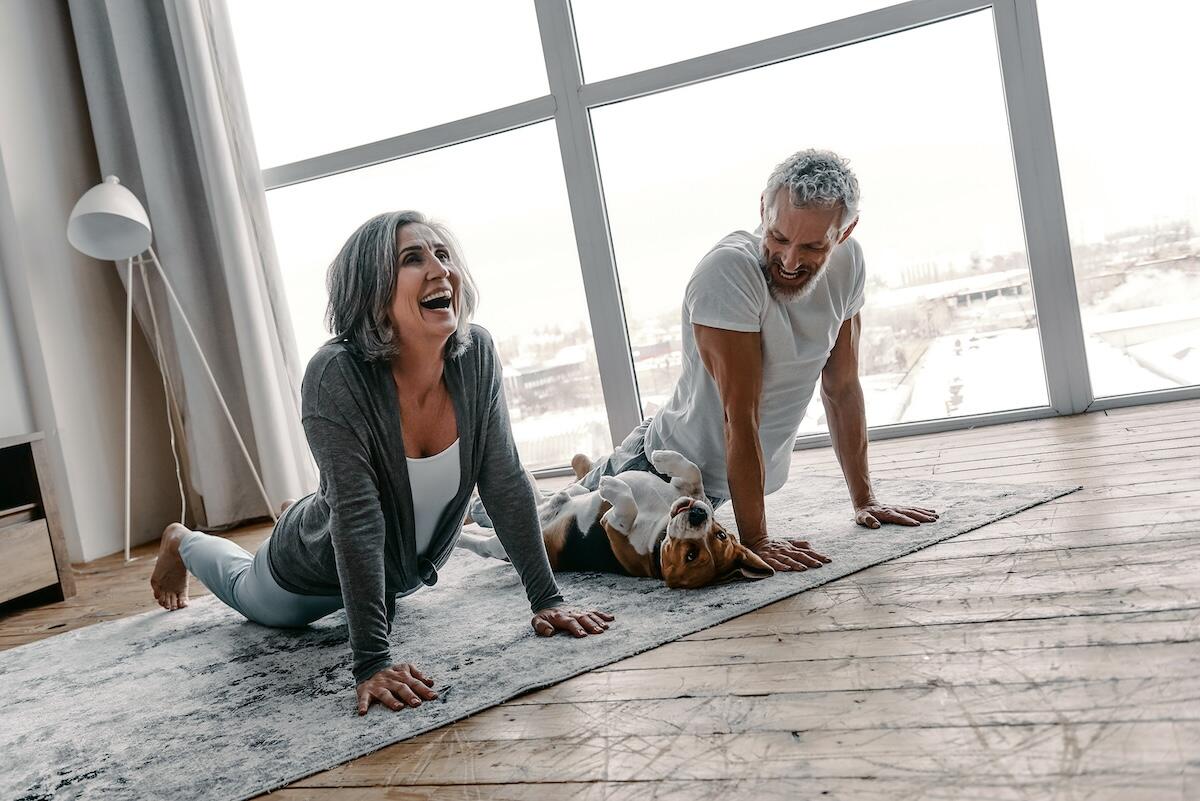Stretches Seniors Can (And Should) do Every Day

- Share via
As we age, our bodies gradually tighten up – that’s just part of the aging process and how our bodies change over time.
According to the American Academy of Orthopedic Surgeons, the tightening is largely a result of joint motion becoming more restricted and inflexible due to changes in tendons and ligaments. In addition, cushioning cartilage begins to break down after a lifetime of use, resulting in joints becoming inflamed and arthritic.
But that doesn’t mean we have to accept those changes in our body and live a sedentary and painful life. Light stretching each day can make you feel more limber, more connected to your body, and most importantly, more ready to go on that hike you’ve been meaning to do, wrangle the grandkids, or stroll out of the house pain-free and with a smile on your face. Like they say, “Motion is the lotion.” As with all exercise, check with your healthcare provider to make sure it’s safe for you. And if anything hurts when you’re doing it, stop right away.
Seniors should routinely do a range of stretches targeting the neck, back, arms, legs and chest. Doing it effectively takes little to no equipment.
To warm up the upper body, start with head rolls, moving the head from shoulder to shoulder, touching your chest with your chin as your head swings from side to side. Follow up with shoulder shrugs, shoulder rolls, elbow rolls, full arm rolls and then reaching across your body with outstretched arms.
To warm up the lower body, march in place or outstretch your legs with toes to the sky. Many stretching exercises derive from yoga. For example, the two “cat-cow” exercises, which improve posture and balance, can be done on a mat by kneeling on all fours with your arms and legs shoulder-width apart.
With “cow” you inhale deeply while curving your back and bringing your head up and tilting your pelvis up. As you exhale, come into the “cat” pose by rounding your spine, tucking in your tailbone and releasing your head towards the floor.
“Child’s pose” stretches your back, arms and muscles around the hip. Kneel and sit on your legs or a block. Then lean forward, keeping your buttocks as close to your legs as possible, resting your forehead on the floor, and stretching your arms out in front of you along the ground.
On the other hand, “downward dog” stretches the hamstring and calf muscles in the backs of the legs and builds strength in the shoulders. With this exercise, the palms of the hands and the feet are on the ground, about shoulder width apart. The legs are straight, and the hips raised as high as possible, with a straight back, so the body is forming an inverted V shape.
Resistance bands are beneficial in stretching your shoulders and hamstrings. For the hamstrings, sit or lie on the floor and wrap the strap around one foot at a time and extend it toward the ceiling while keeping the other leg flat on the ground. Then with the strap around one foot at a time, bend your knee and bring it as close as possible to your body. Your shoulders, arms and backs benefit from attaching a resistance band to a door anchor and using the straps to make Y, T and W shapes with your arms. Keeping good balance is essential to keeping stability and coordination, thereby preventing many injuries.
Stretching calf, thigh, hip and core muscles helps achieve better balance. Balance exercises include sitting in a sturdy, straight-back chair with your feet hip distance apart. Lean slightly forward and raise your rear from the chair. As you get better at this, you can eventually stand all the way up. Another balance exercise is practicing standing on one leg, then another, making sure you’re close to a chair back or similar that you can grab onto if you lose your balance.
A “supine twist” targets the gluteus, chest and obliques and feels great, usually done at the end of a workout when the muscles are warm. However, it’s not to be tackled by people with spinal injuries or herniated discs. For this exercise, lie on your back. Bend one leg to the side and then outstretch the other one in the same direction, while turning your head in the opposite direction. The arms can be out in a T shape.
Do you feel better already?
-Joe Yogerst